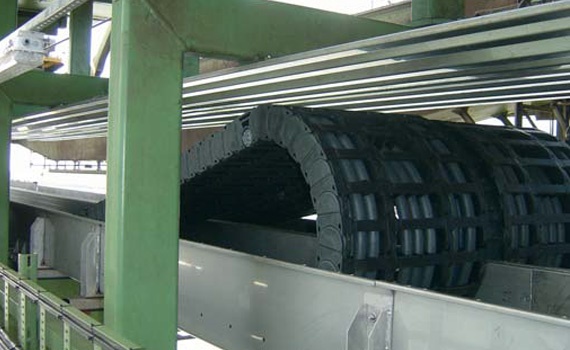Pre-assembled e-chain® provides energy and data transmission in crane construction
Ship-to-shore cranes can be found at ports. Their task is to shift containers from ship to shore or from land to ship. To unload large container ships economically, cranes with a high loading capacity are required. The travel of ship to shore cranes is up to 500 m. Often the weight of such cranes is over 2,000 tons.
Profile
- What was needed: readychain® harnessed energy chain
- Requirements: Long travel, stable for a cable weight of 50 kg, suitable for all weather conditions
- Industry: Crane construction
- Success for the customer: Thanks to the pre-assembled readychain system, a lot of time could be saved during assembly.
Contact an igus® expert now

The challenge
Due to the long travels in crane construction, the demands on operational safety are particularly high. The challenge is to avoid costly stoppages and thus downtimes. In addition, long travels also mean that the cables within them are very heavy at this length. For this reason, the energy chain must be able to carry this weight accordingly. It must also be ensured that no losses occur in data and energy transmission on this travel. The trolley drive on ship-to-shore cranes, for example, runs at a speed of 250 m/min.At the ports, the cranes are exposed to the weather, which is why the energy chains and cables should be resistant to harsh environmental conditions and withstand them.
Solution
The system was delivered to the construction site completely pre-assembled. This saves the customer a lot of time during installation and installation errors are largely eliminated. The energy chain systems installed in a shaft were equipped with stainless steel guide troughs and provided with a traversable lid system for protection against weather and sunlight.For trolley drive at high speed, a roller energy chain was used for energy and data transmission. It was not necessary to use additional drives or a control system for the chain. Furthermore, the weight is lower than with a conventional system. The crane manufacturer can thus save drive power for the trolley and system weight.
For data transmission, a chainflex® fiber optic cable was used, which is the safest type of data transmission (without electromagnetic compatibility interference) and thus avoids the risk of possible data loss.
To the readychain® overview